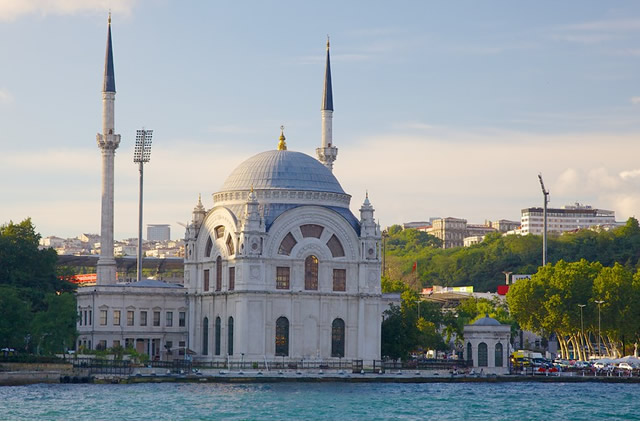Istanbul
Istanbul is a unique city that straddles two continents. As both European and Asian heritage is present in some parts, it seems to visitors that this is a place where two cultures, European and Asian, Christianity and Islam collided. I fell in love with the city at first sight. It exudes nostalgia for the past, and it seems as if an Asian princess, covered in silk and gold, will emerge from around a corner, accompanied by guards with drawn sabers.
It is divided into three units by water surfaces. The Bosphorus strait divides Istanbul into the Asian and European parts, while the Golden Horn canal cuts through the European part. This is where the most beautiful part of Istanbul is located – Sultan Ahmet, located south of the Zlatni Rog canal. I recommend this as a starting point for a tour because it is where the most interesting sights of Istanbul are located.
Hagia Sophia
Depart from Hagia Sophia (Hagia Sophia). It is a former Orthodox church from the time of the Byzantine Empire, which the Turks converted into a mosque after the conquest. They added minarets, painted over the frescoes and painted the walls with quotes from the Koran. The church is huge and its structure resembles the Church of St. Sava in Belgrade. By decree from the 1920s, Hagia Sophia became a museum.
The Blue Mosque
Across the road from Hagia Sophia, on the same plateau, is the Sultan Ahmet Mosque – popularly called the Blue Mosque. It is an impressive building, the size of Hagia Sophia with 6 minarets. There is still a service going on in it, so choose your viewing time carefully and dress appropriately. Long pants are mandatory for men, and long skirts and covered shoulders for women.
Topkapi Palace
This palace was the residence of Turkish sultans for 400 years. t was built in the middle of the 15th century, when Sultan Muhammad II captured Constantinople. Since then, it has been renovated and extended several times. It houses some of the most valuable relics from Islamic culture: the cloak and sword of the Prophet Muhammad. Within the palace there are a number of buildings of various purposes, but the harem left the biggest impression on me. The fountain that symbolizes the flow of human life is also interesting.
Dolmabahçe Palace
This is the last residence of the Ottoman Sultans, an opulent palace with marble and gold details. After the fall of the Ottoman Empire, it became the residence of Turkish President Kemal Pasha Atatürk. It is interesting that there is a separate women’s and men’s section, as well as that women were not allowed to attend the receptions, but would watch what was happening in the large halls through the windows.
Historical – archaeological museum
You need to set aside at least one day to visit the treasury of this museum. It contains significant collections from all major historical eras: the earliest civilizations, the Egyptian kingdom, Hellenistic culture and the long period of the Ottoman Empire. Apparently, the sarcophagus of Alexander the Great is kept in this museum. . I liked the collection of jewelry from the Hellenistic era and the huge chain guarding the entrance to the Zlatni Rog canal.
Kapali bazaar
When you tire of historical facts, it’s time to step into a space that will take you back 300 years to the past. It is Kapali Bazaar or Grand Bazaar. A large market where you can buy leather and fur clothing, hand-woven carpets, gold jewelry, Turkish delicacies, beautiful scarves, wood and semi-precious stone items, hookahs… Turkish merchants are very willing to haggle over the price, so never accept the first offer. It’s a kind of game for them, like outsmarting. There is only one rule you should follow in order not to anger the shopkeepers: haggle over the price only if you really intend to shop in that shop. In other words, if you have decided to buy an item and have chosen a store, you can negotiate the price, but do not do so if you entered the store just to look around.
Hammams
At the end of a busy day, when you are tired of museums and churches and carpets and gold, allow yourself to relax in a hammam. Hammams are public baths and they are far from the picture we saw in the movie Zona Zamfirova. Almost all hammams in Istanbul are built in the same way and must have separate men’s and women’s rooms. The women’s quarters have a changing room and a bathing area that is completely covered in marble. The room is circular in shape and in the center there is a stand for lying in the shape of a huge disk. It is made of marble that is heated from the inside. There are water fountains and cooling bowls on the edges of the room. It is allowed to douse yourself with cold water. The temperature in the hammam is very high, and the air is saturated with water vapor, which is ideal for relaxation and enjoyment after a hard day.
Interested?



